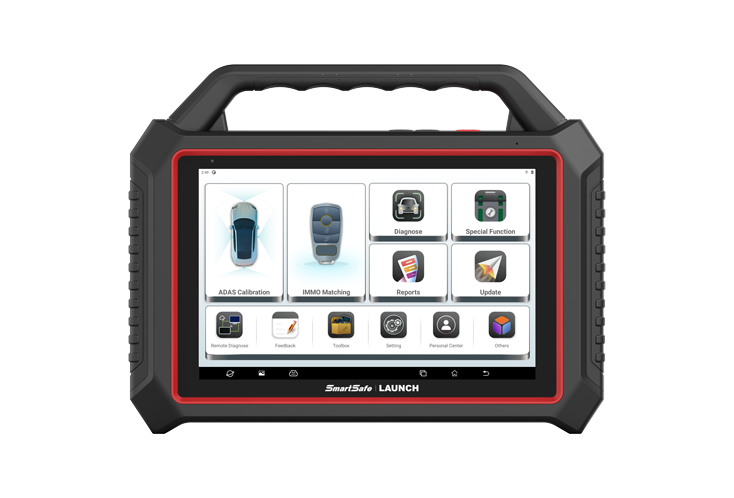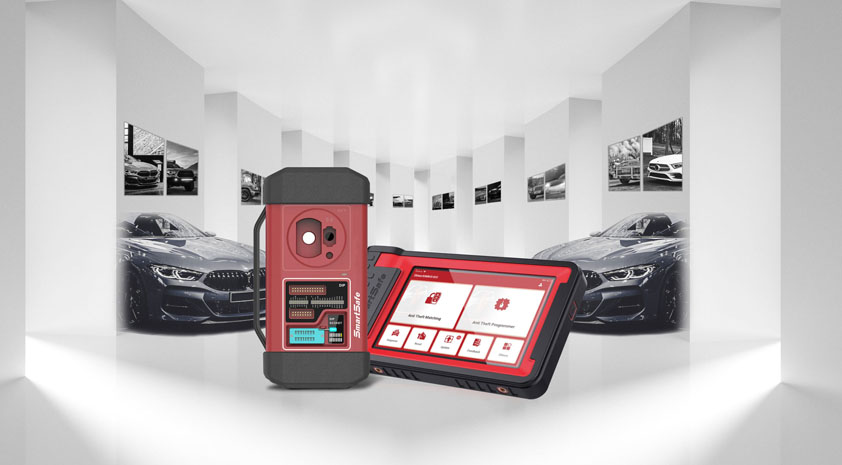What is steering angle sensor calibration?
The steering angle sensor is a sensor used to monitor the position and motion state of the steering wheel of the vehicle. It provides important information for various systems in the vehicle. Such as lane departure warning system, adaptive cruise control system and stability control system.
Steering angle sensor calibration is the process of adjusting or resetting the sensor to ensure that it detects the steering angle accurately and provides correct and reliable information to the vehicle's systems.
Why do you need to calibrate steering angle sensor?
Specifically, the steering angle sensor is an important part of the vehicle's Electronic Stability Control (ESC) system. ESC determines the expected direction of the vehicle through the angle data of the steering wheel it provides.
If the steering angle sensor is not calibrated correctly, it may cause incorrect readings, preventing the ESC system from activating when needed. This can affect the vehicle's stability and handling, possibly resulting in an accident.
Therefore, the steering angle sensor must be calibrated to ensure the normal operation of the ESC system.
Under what circumstances is it necessary to calibrate the steering angle?
We need to calibrate the steering angle of the vehicle to ensure that the wheels are properly aligned and that the vehicle stays straight on the road. So, when is it necessary to calibrate the steering angle?
① After wheel alignment: When we have carried out wheel alignment on the vehicle, it is necessary to calibrate the steering angle to ensure that the vehicle track is straight.
② After replacing the steering angle sensor: If the steering angle sensor fails or needs to be replaced, then the new sensor needs to be calibrated to ensure that it provides accurate data for the vehicle's stability control system.
③ After replacement of steering components or suspension: If any suspension or steering components such as tie rods, ball joints or control arms have been replaced. The steering angle sensor needs to be calibrated to ensure the wheels are still properly aligned.
④ After a collision: If the vehicle has a collision, it is necessary to calibrate the steering angle to ensure that the vehicle can drive straight.
In summary, steering angle sensor calibration may be required whenever there is a change in steering component or wheel alignment. Of course, during the calibration process, the manufacturer's calibration recommendations must be followed to ensure that you perform the standard correctly.
How to calibrate steering angle sensor?
The procedure for calibrating the steering angle sensor varies by Brand and model of vehicle. However, we've put together a general guide on how to calibrate a steering angle sensor for you:
① Connect the car scanner tool: Connect the scanner to the OBD-II port of the vehicle, select the appropriate function to calibrate the steering angle sensor.
② Position the steering wheel: Make sure the steering wheel is centered and the wheels are pointing straight ahead. Follow the prompts on the scan tool to start the calibration process. Some vehicles may need to turn the steering wheel in a certain direction or travel in a straight line at a certain speed.
③ Completion process: After the calibration is completed, the scanning tool will prompt whether the calibration is successful. If successful, you can disconnect the scan tool and test drive the vehicle to make sure the steering is working properly.
Here are some tools you may need to use for steering angle sensor calibration:
1. Automotive Scan Tools: A scan tool is a diagnostic tool that communicates with the car's on-board computer to access data and initiate the calibration process.
2. Wheel alignment equipment: Wheel alignment equipment may be used. Such as alignment brackets, to ensure that the wheels are properly aligned before calibration of the steering angle sensor.
3. Turntable: Make sure the wheels are pointing straight ahead during calibration.
4. Wheel Chocks: Prevent the vehicle from moving during calibration.
5. Torque Wrench: A torque wrench may be required to tighten the bolts and nuts to the manufacturer's specifications.
Not every vehicle requires these tools, and some vehicles may require specific equipment or additional tools. We must follow the manufacturer's recommendations and procedures to ensure that calibration is performed correctly.
Here I recommend some steering angle calibration tools for you from SmartSafe.
ST10: enables you to reset the steering angle, after replacing the steering angle position sensor, replacing steering mechanical parts (such as steering gearbox, steering column, end tie rod, and steering knuckle), performing four-wheel alignment, or recovering car body.

IMMO 801: To reset the steering angle, first, we need to find the relative zero position where the car is driving in a straight line. Taking this position as reference, the ECU can calculate the accurate angle for left and right steering.

